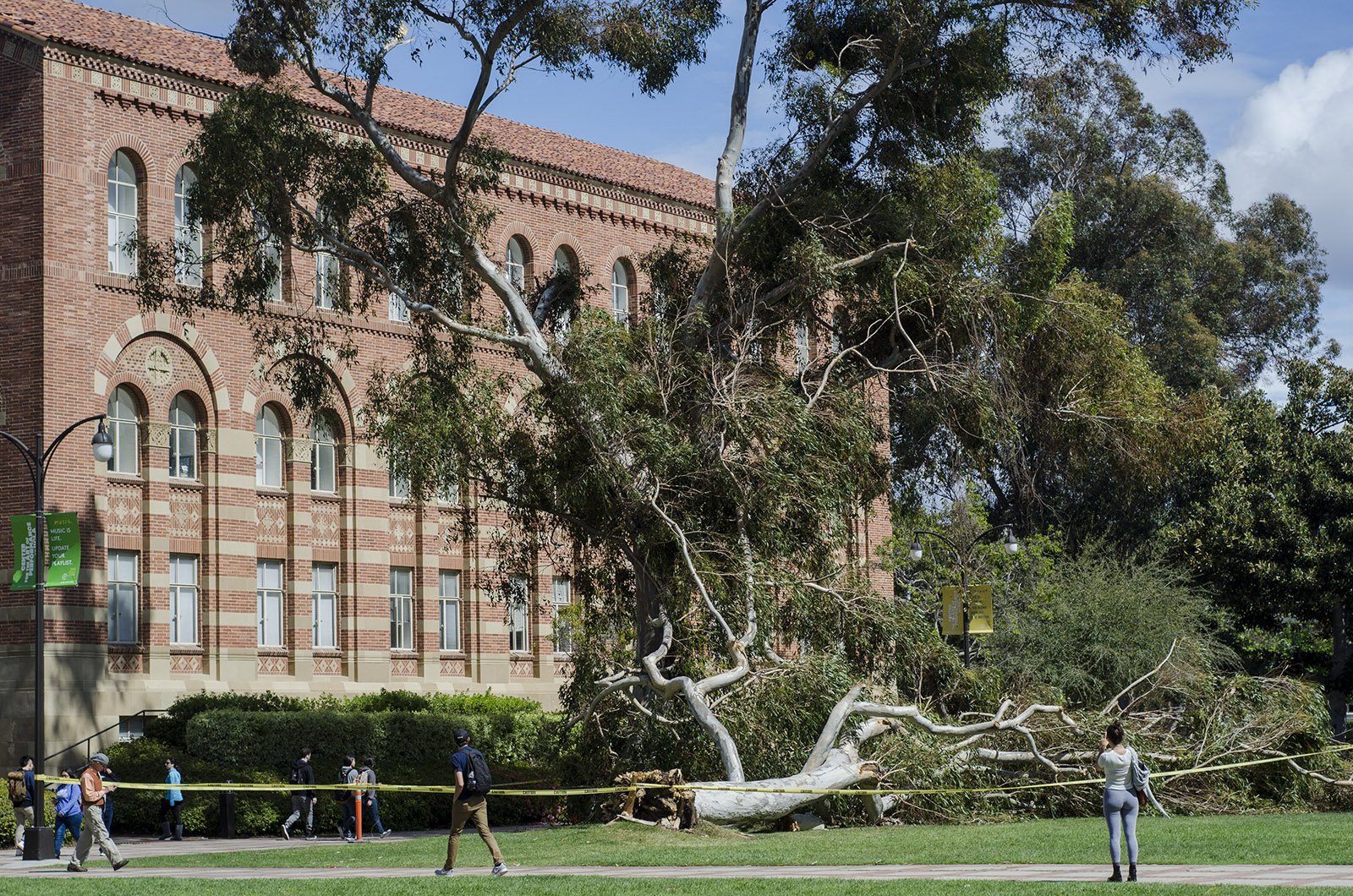The changing campus landscape: 2016’s fallen trees

This tree in front of Haines Hall was just one of many that came down across campus in 2015-2016. (Miriam Bribiesca/Photo editor)
By Cassie Thompson
June 5, 2016 12:45 p.m.
Our beautiful campus wouldn’t be what it is without all the grassy hills, decorated bricks and towering, majestic trees. Sadly, a few of those beloved trees were toppled this year, leaving us feeling that key pieces of the scenery disappeared from some areas of campus.
In researching these fallen trees, I found that there was more to their fate than meets the eye. It may seem that the broken trunks were simply an accident of the seasonal storms that blew through campus, but many of the trees had already been facing larger problems than that.
Richard Ohara, the senior educational facility planner supervisor for UCLA, spoke with me about our recent tree losses and the stresses that continue to weaken those we have left.
“The California drought has been going on for seven years, putting a toll on the trees on campus. Unfortunately, we have some trees in the wrong areas that are struggling to get water,” he explained.
California as a whole has already lost 12 to 15 million trees thanks to our ongoing drought. This struggle for survival is both widespread and costly for the environment as we continue to lose weakened trees across the state.
In addition to this, the trees on campus, and in many other parts of the state, have been facing bark beetles in recent years. Ohara told me that these bugs tend to prefer pine trees, and though the facilities team has been using preventative integrated pest management solutions to manage the swarms, it remains a constant battle. Even with monitoring and spraying, the task of controlling bugs that can be as small as a pencil dot isn’t easy.
Ohara also mentioned that UC Irvine alone has lost more than 1,000 trees recently because of invasive beetles. So, although every tree we see come down at UCLA is heartbreaking, it could certainly be worse. They are making the best of it, and have been tracking the holes bored by these bugs in their trees for research. Perhaps it’s something we ought to consider doing at UCLA too.
This isn’t the first time we’ve had to deal with damaging critters, so perhaps there is a light at the end of the tunnel. About a decade ago, UCLA’s eucalyptus trees were facing lerp insects, which suck the sap from tree bark, stressing the foliage and preventing photosynthesis from taking place. Thankfully, most of those trees, planted in the 1950s and ’60s, made it through that period in one piece, though many were weakened.
One other challenge we discussed is the less visible effects on our plants caused by construction. Road expansions on campus in the early 2000s compromised the structural integrity of many trees, particularly the eucalyptus that tend to line the outer edges of campus. After the street was widened by 12 feet, those trees were left with 1/3 of their roots clipped, Ohara concluded.
With all of these threats and stresses our trees have to face on a regular basis, it’s no wonder that a storm can blow in and knock a few down as if they were bowling pins.
Several of our trees were victims of the storms in April and faced wind speeds of up to 70 miles per hour, Ohara informed me. Below are a few of the trees damaged or lost at UCLA this year.


